Abstract
Human behaviour has been largely neglected in research on the parasitic diseases, in part because of the long-standing separation of the behavioural disciplines from the physical and biomedical sciences. Some of the reasons for the persistence of this ”intellectual discontinuity” are discussed. The paper is principally concerned with the prospects for greater use of the methods and orientations of the behavioural sciences in parasitic disease research and control programmes. Behavioural research tends to fall into two categories employing, on the one hand, survey research and epidemiological methods and, on the other, participant observation and interviewing in depth. These approaches are shown to be complementary—equally useful and necessary. Various categories of health-related behaviour and kinds of research objective are reviewed in the following sections. Special attention is given to psychosocial cost—benefit studies, to analyses of control sectors, and to the formulation of a control philosophy. Finally, some specific behavioural research needs are discussed for some of the parasitic diseases of priority in the UNDP/World Bank/WHO Special Programme for Research and Training in Tropical Diseases—schistosomiasis, filariasis, American and African trypanosomiases, and malaria.
Full text
PDF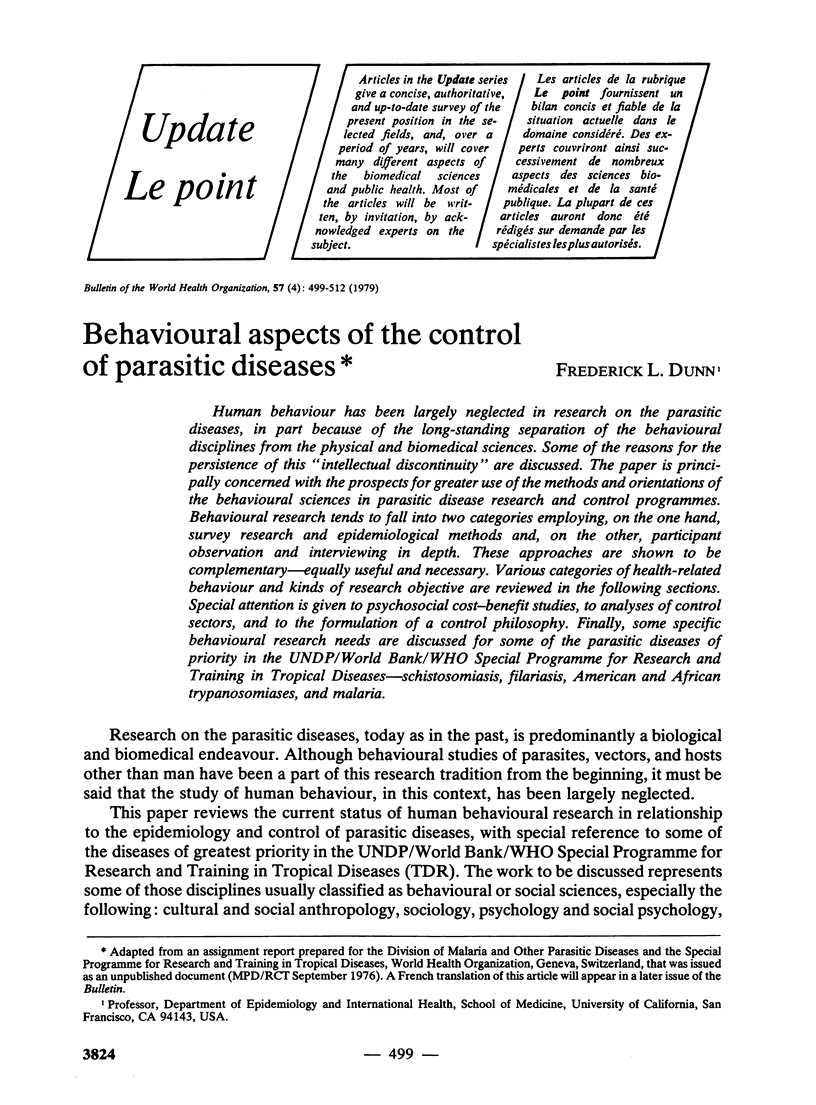
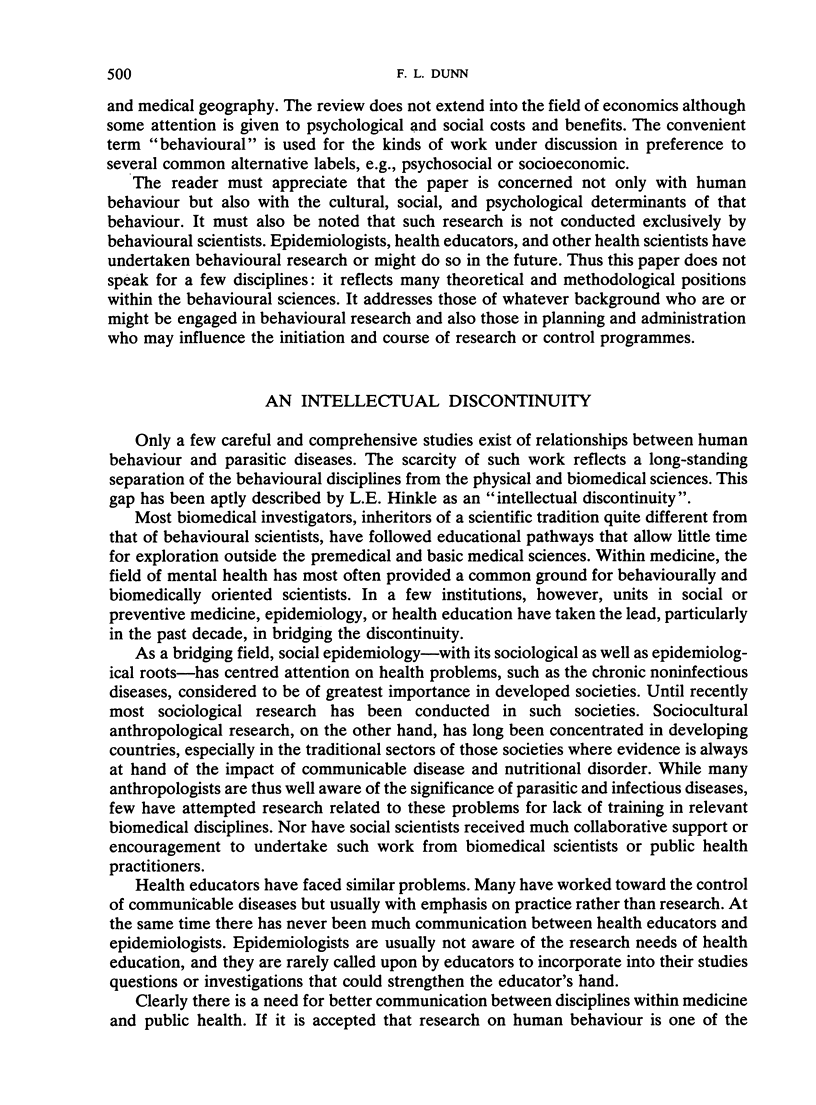
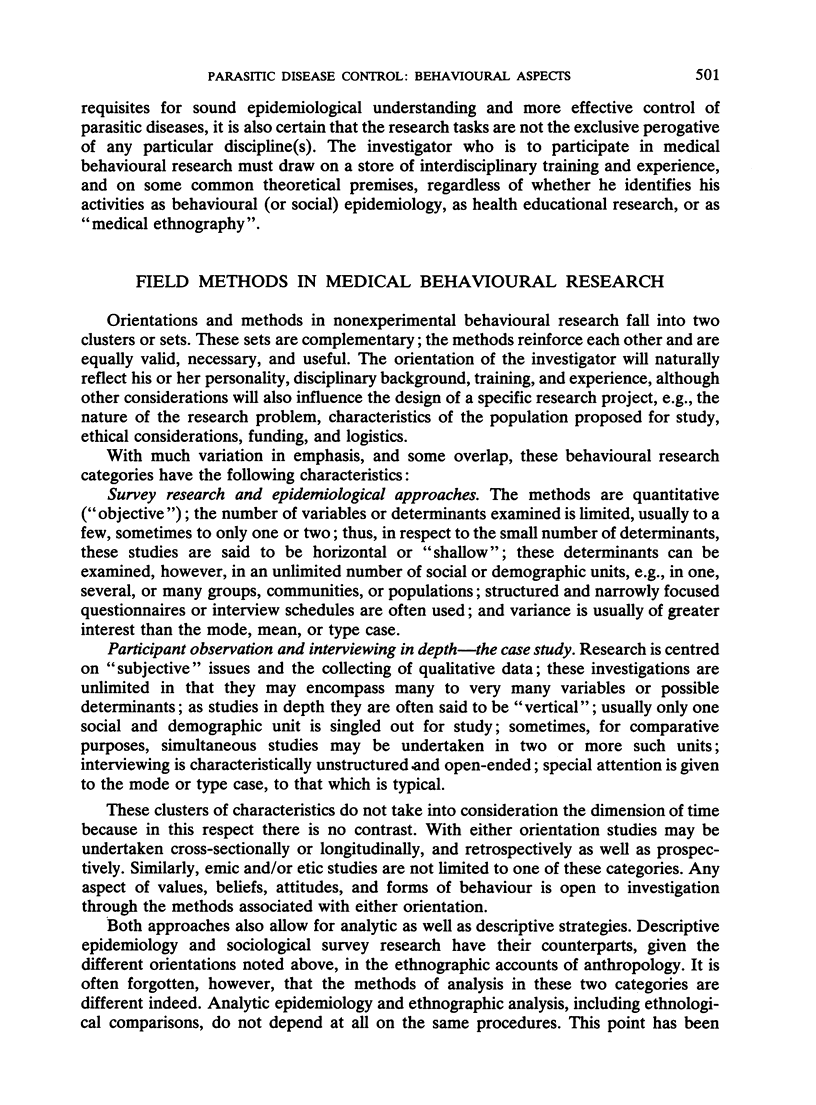
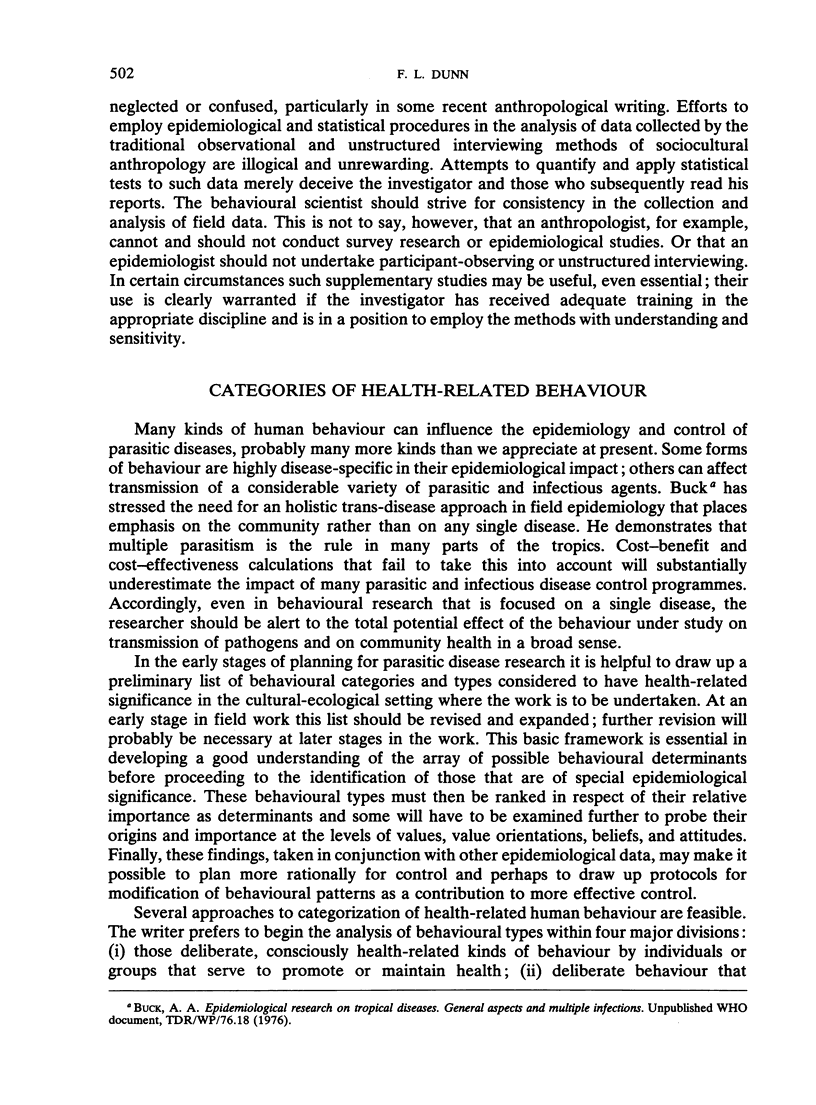
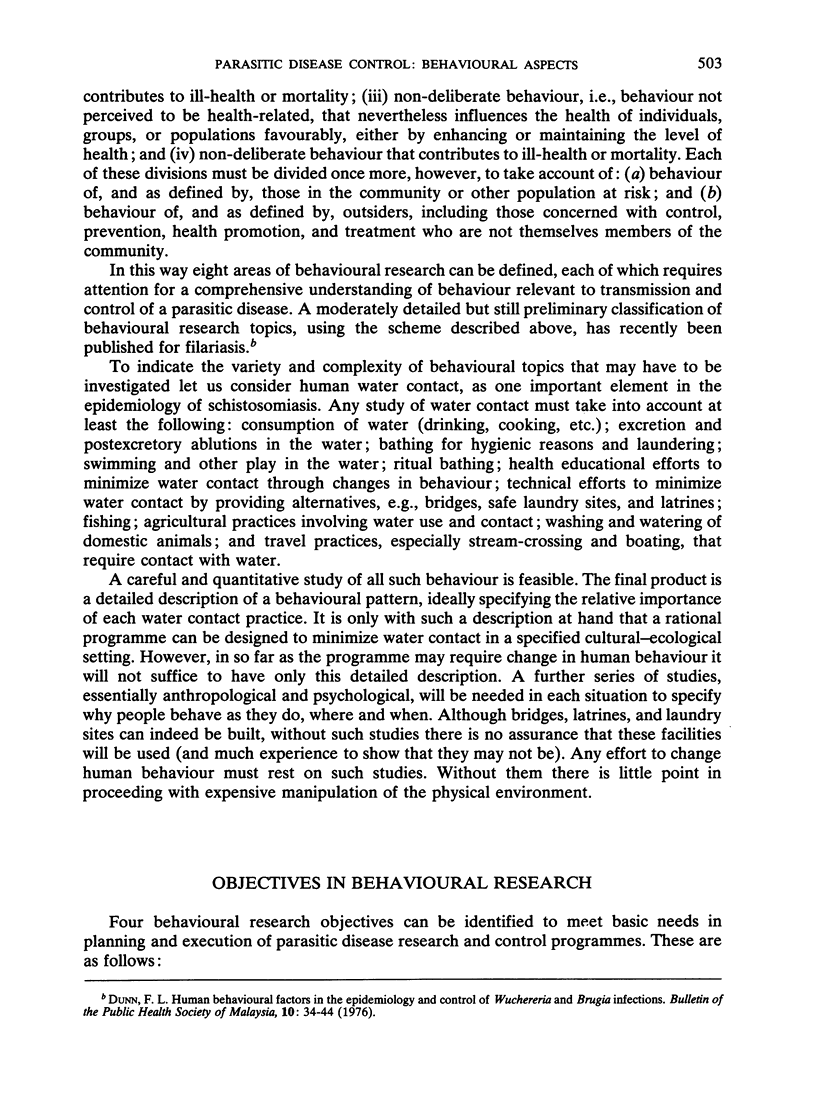
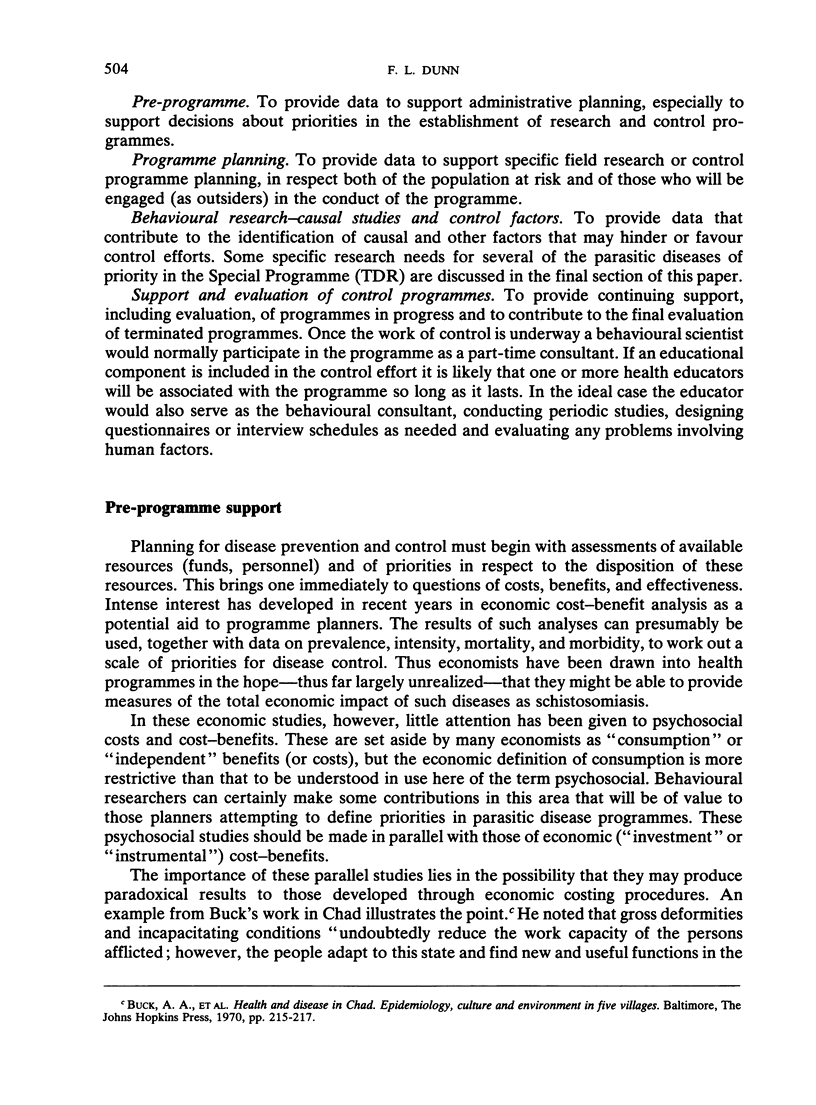
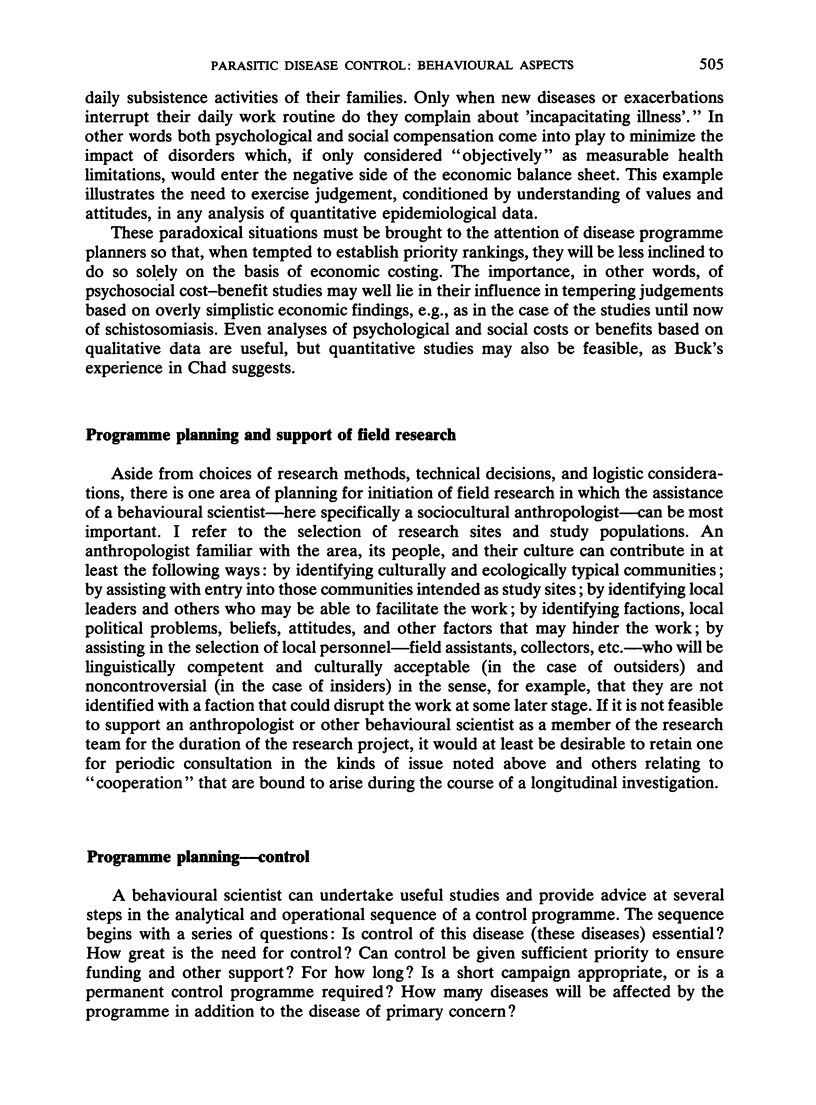
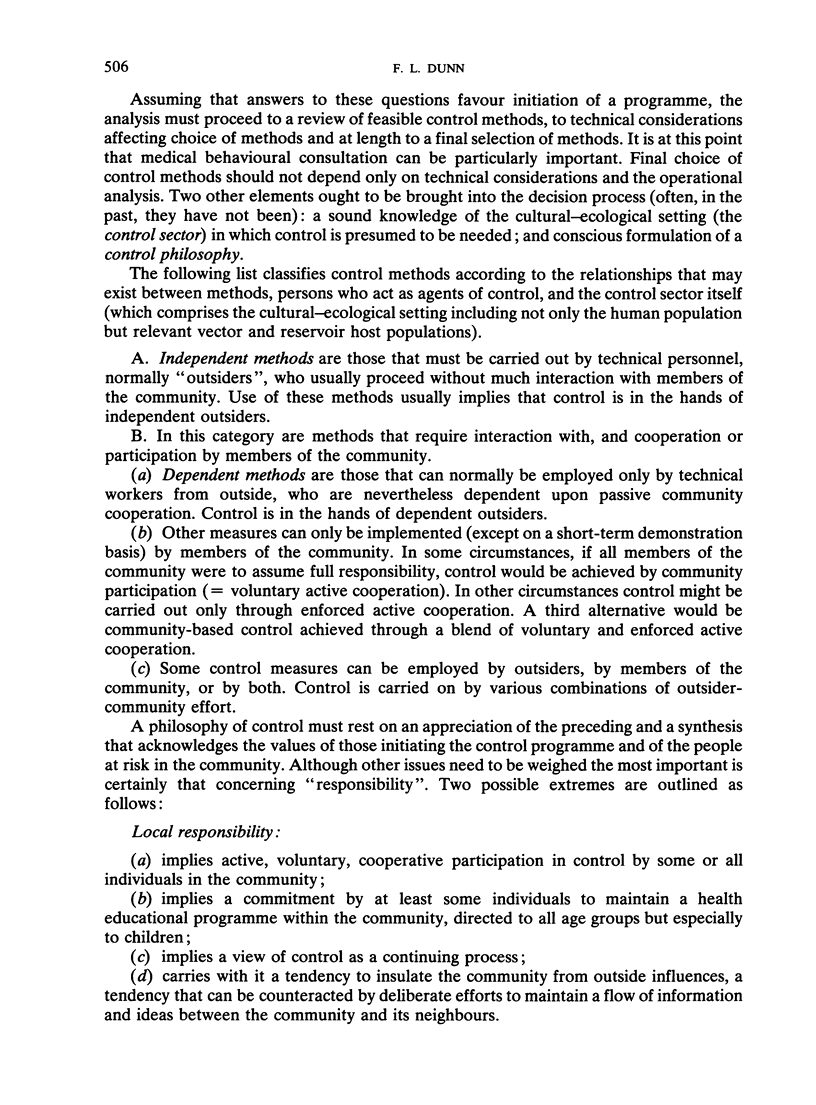
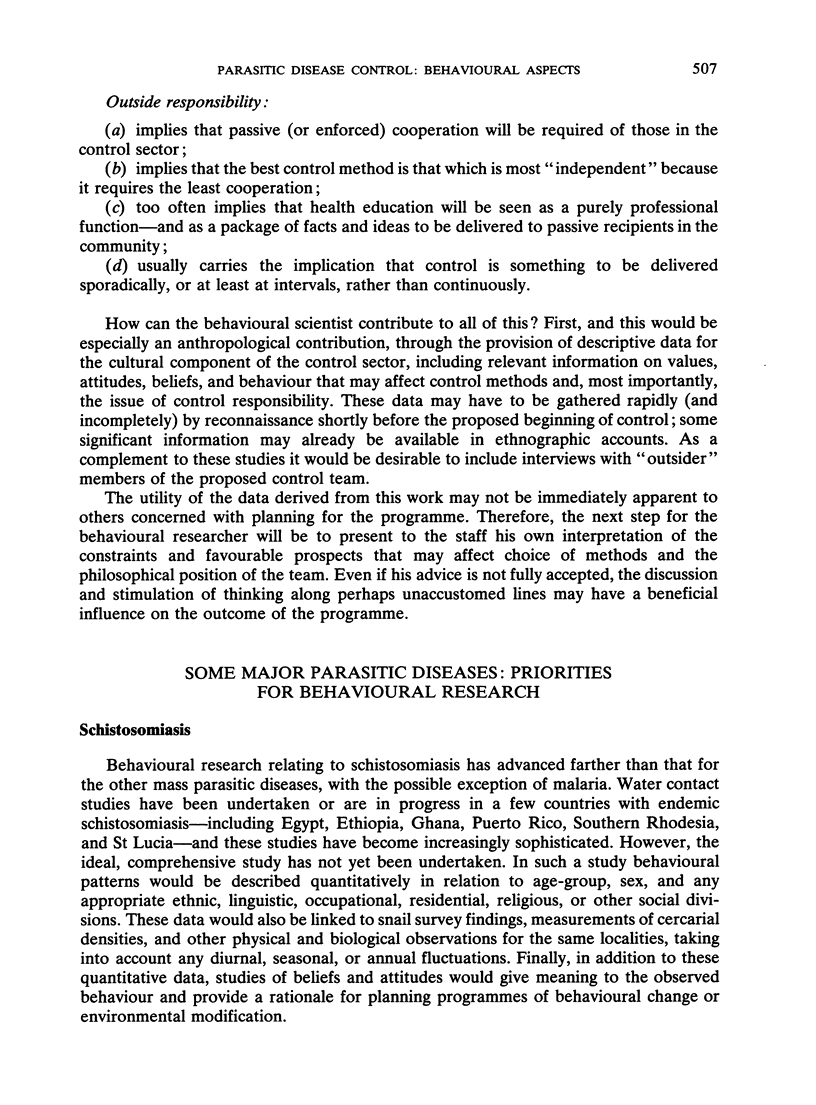
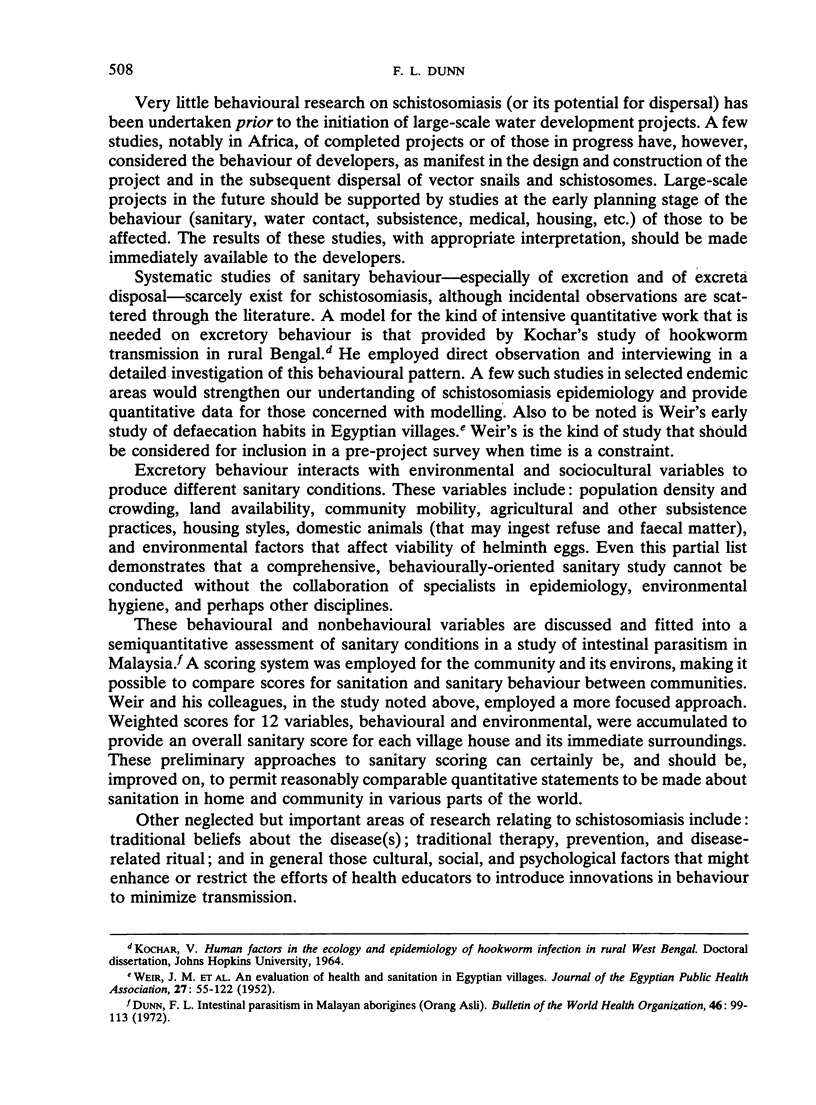
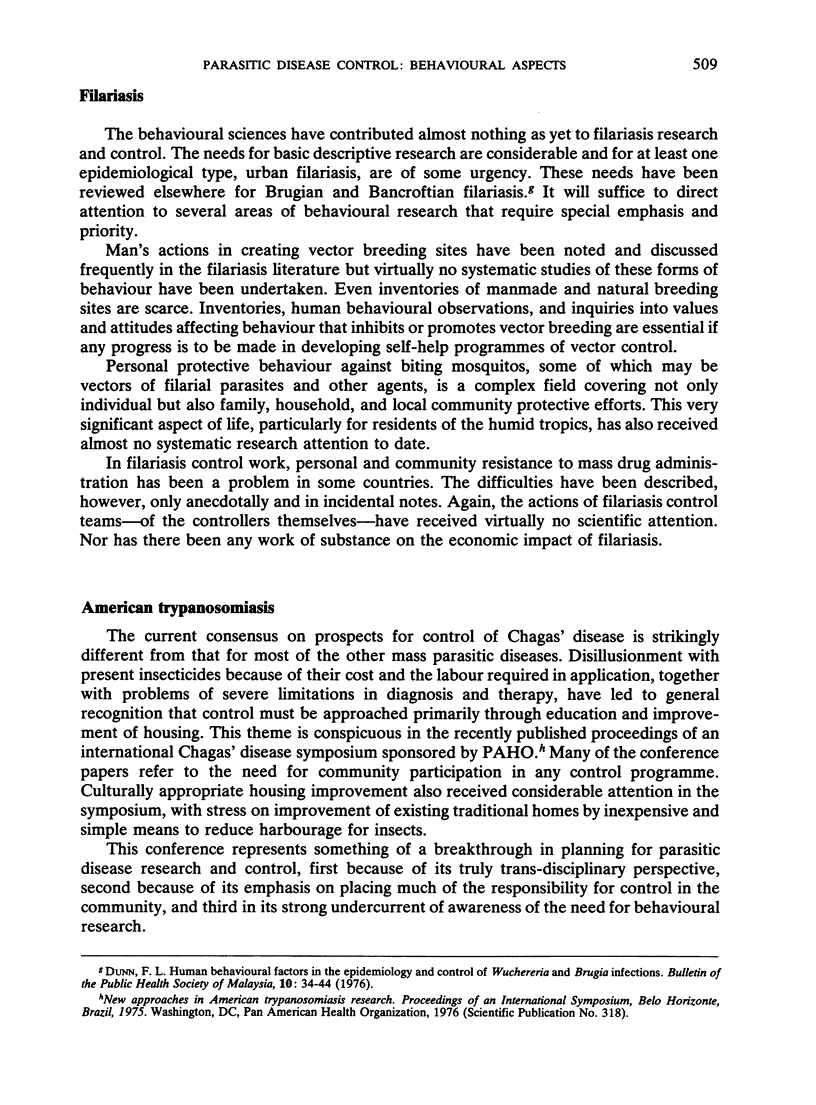
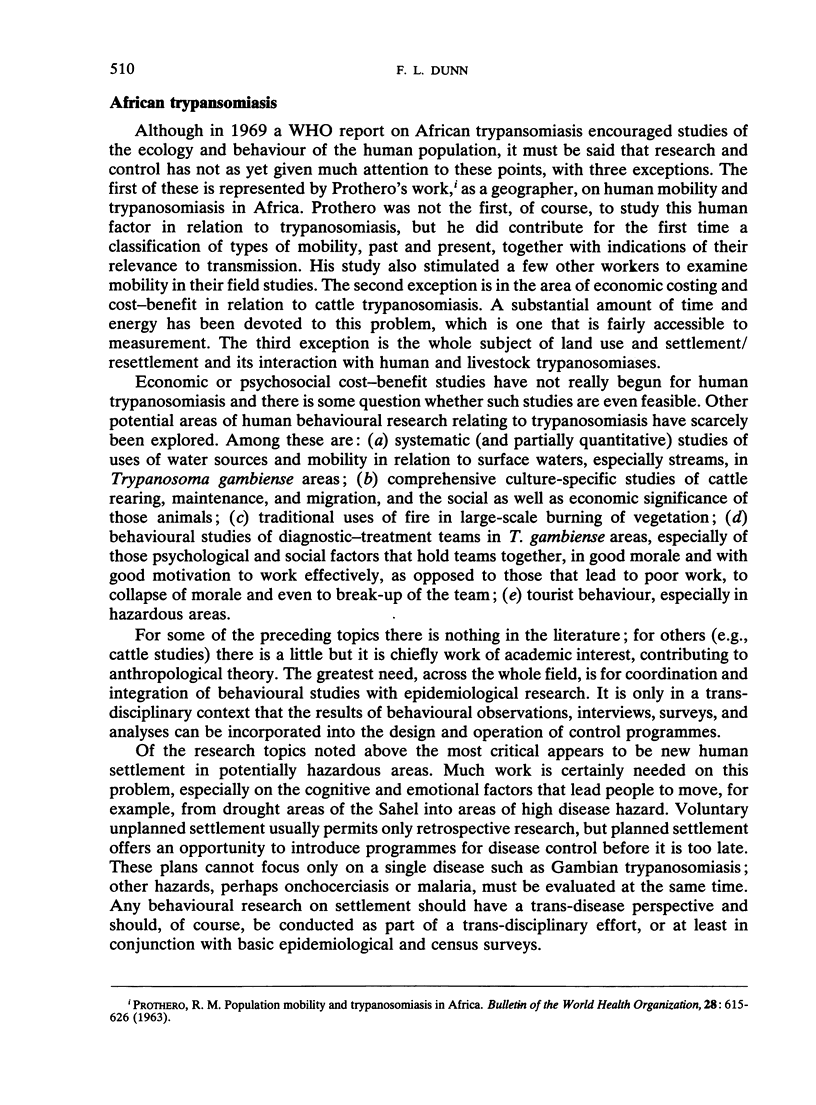
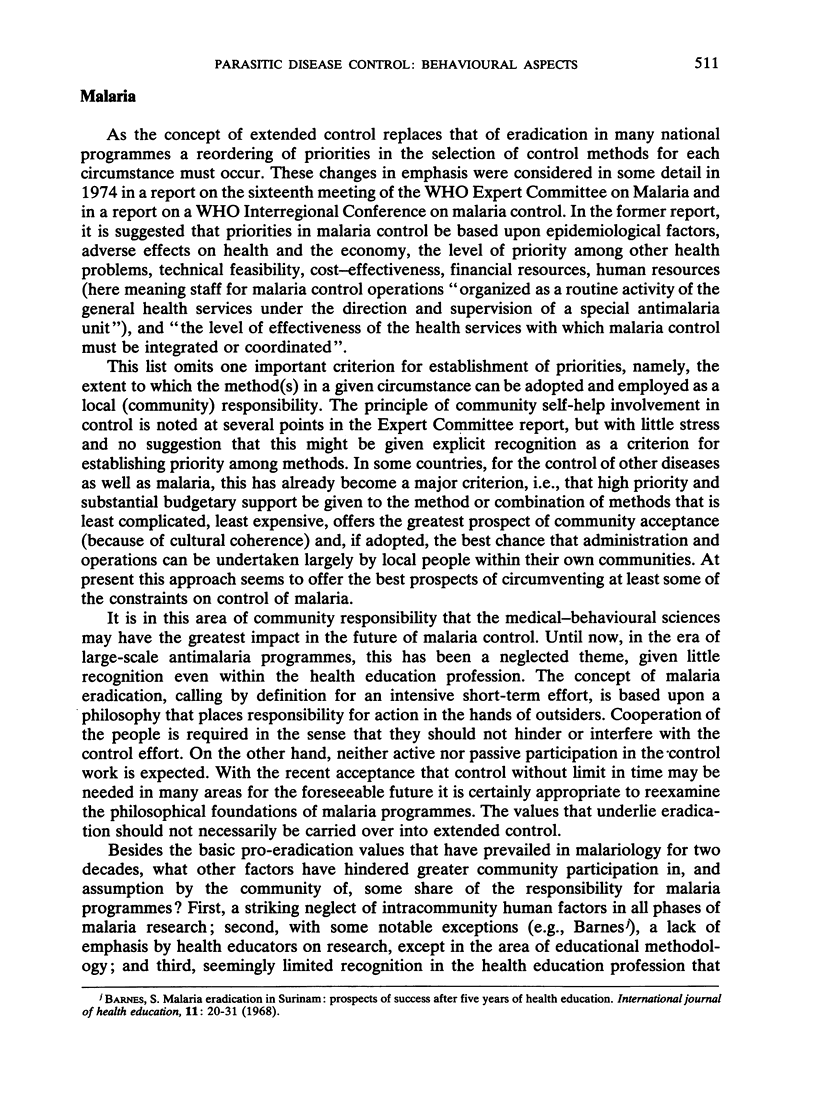
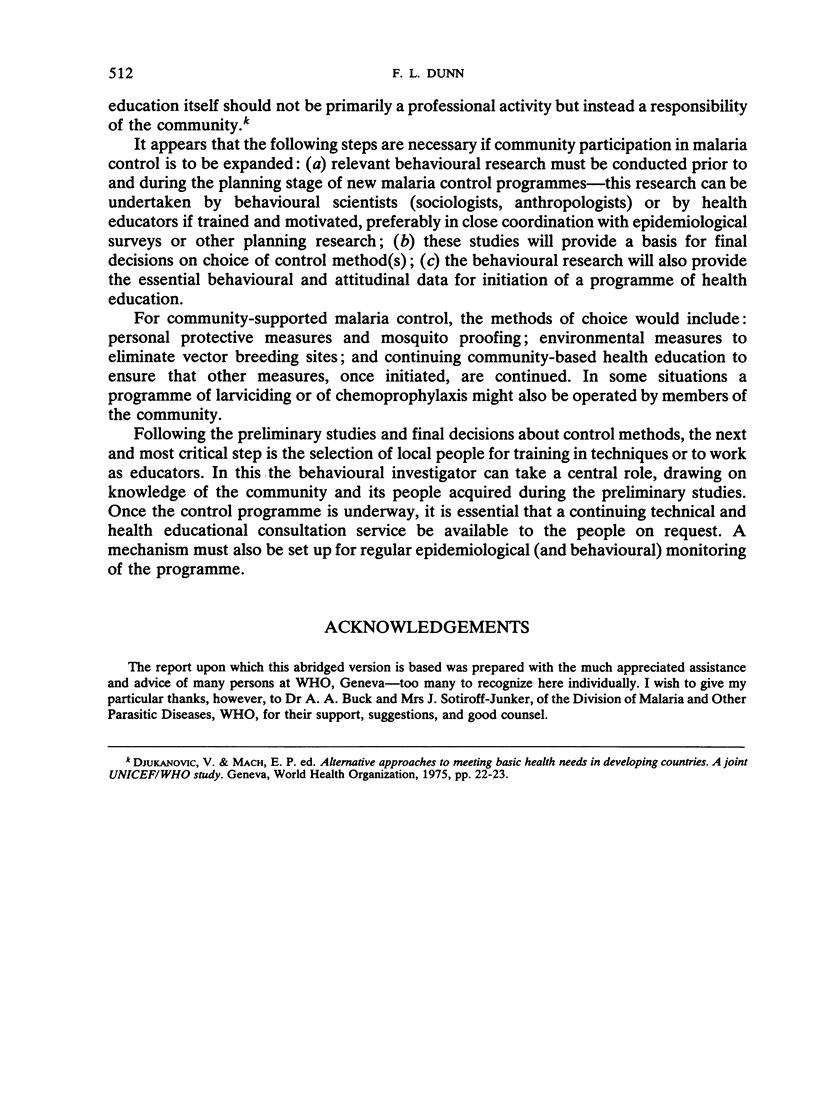
Selected References
These references are in PubMed. This may not be the complete list of references from this article.
- Dunn F. L. Intestinal parasitism in Malayan aborigines (Orang Asli). Bull World Health Organ. 1972;46(1):99–113. [PMC free article] [PubMed] [Google Scholar]
- PROTHERO R. M. Population mobility and trypanosomiasis in Africa. Bull World Health Organ. 1963;28(5-6):615–626. [PMC free article] [PubMed] [Google Scholar]


